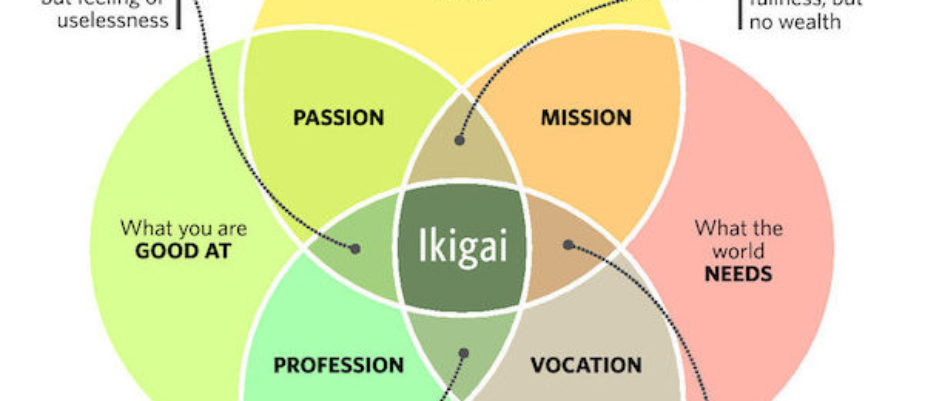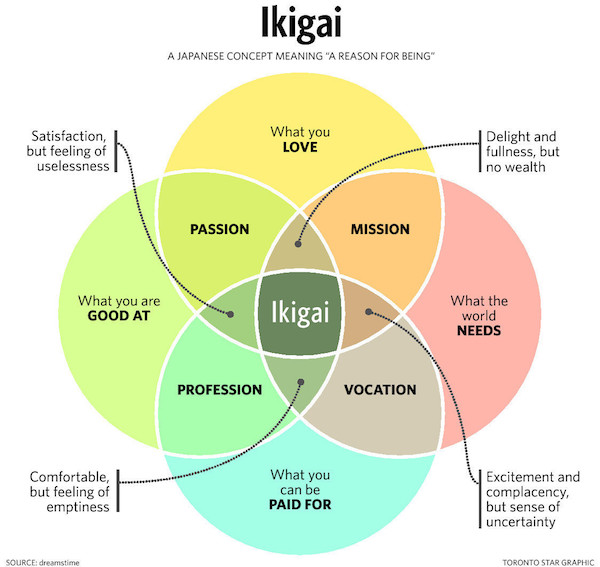
To live in conditions of well-being you need to give some sense to your life, and the same goes for a work environment.
Applying the Japanese concept Ikigai in professional life can help us improve the relationship with co-workers, to be more comfortable and less stressed. Here are a few simple steps to follow to be happier at work.
According to the Japanese culture everyone has their own Ikigai. The translation is, more or less, “the meaning in one’s life”, “the achievement of what you wish for in your life”. But how many people can really say they have found it?
We can find it out by answering four questions:
1) What’s is it that excites you and what do you really want to do?
2) What are you good at?
3) What does the world want from you?
4) What’s your job?
It’s necessary to find the balance, as the picture shows, although soul-searching can be long and take time.
How to apply Ikigai at work.
First, a manager can ask deep questions to understand if their management style enables collaborators and employees to find their own Ikigai:
1) Can you call yourself a good boss if you make other people unhappy?
2) Were talent and passion the basic criteria in the selection of collaborators?
3) Are you doing something to ensure that your colleagues and collaborators are happy at work?
4) Are you surrounded by smart people forced to do dummy work?
5) Can demotivated staff give good results in productivity?
The pillar of a wellbeing and Ikigai-oriented company are based on:
1) Detection and sharing of the explicit aims to achieve;
2) Detection and sharing of the method;
3) Optimization of the workplace layout.

















